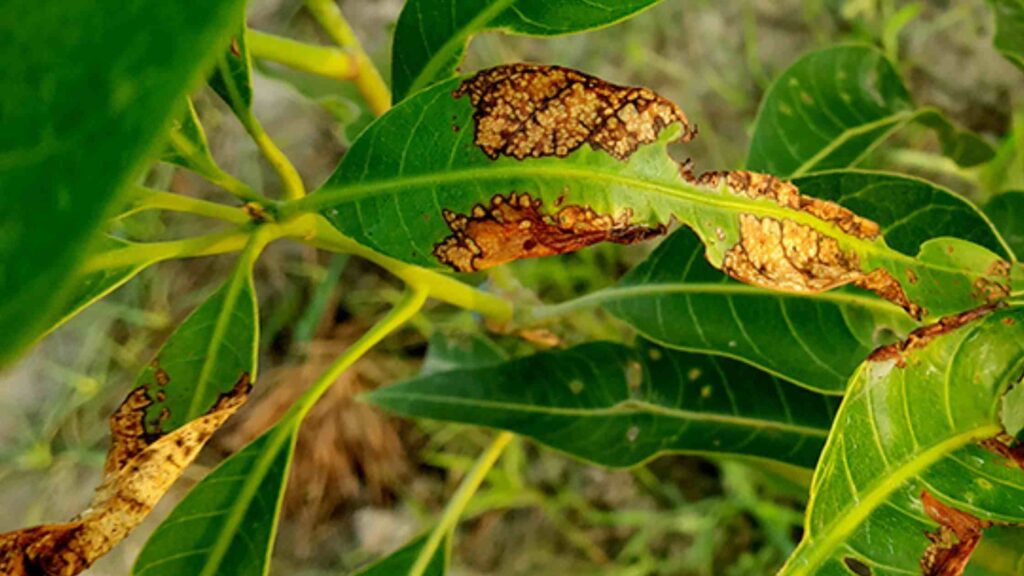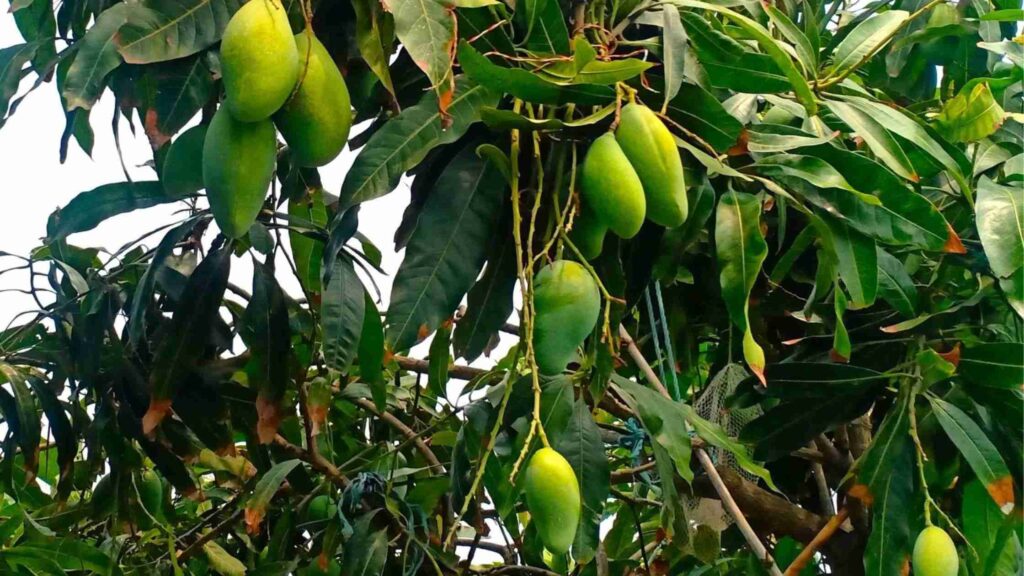Why Do Mango Tree Buds Fall? What Should You Do If the Buds Don’t Fall? In this article, I’ll address these questions and explore strategies for increasing mango yield by nurturing the buds. We will understand the reasons behind mango flowers falling off and how to prevent it. Learn about common causes like pests and weather and care tips for better fruiting.
The dropping of mango flowers or buds is not a matter of concern. The critical aspect lies in identifying which flowers are falling. Within a bunch of mango buds, there are thousands of flowers, including both male and female. Typically, the initial blossoms are male flowers, while female flowers are situated towards the front of the bunch, where mangoes eventually form. Male flowers serve the purpose of pollen distribution before naturally falling off as per the laws of nature.
However, we often misinterpret this natural process and resort to fertilizers, medications, and hormones in response to flower drops. Ironically, this intervention can lead to the dropping of female flowers as well, yielding unintended consequences. The female flowers may fall for numerous other reasons as well.
Key Reasons for The Collapse of Mango Flowers:
Insects Attack

Various insects, including mites, millibugs, thrips, fruit flies, and hopper insects, feed on sap extracted from leaves, flowers, and fruits. Among these, hopper insects are the most destructive. A single hopper insect can lay 150-200 eggs, which hatch into nymphs within a week. These nymphs continue to feed on sap, consuming up to 20 times their body weight. Additionally, hopper insects secrete a sugary substance known as honeydew, which attracts a fungus called “Sooty Mould” to mango trees. The growth of this fungus results in the blackening of leaves, hindering photosynthesis. Moreover, the buds of the tree are also affected, turning black for the infestation.
Bad Weather

Strong fungal infections such as powdery mildew or anthracnose tend to strike during periods of increased cloud cover or fog during the budding and blooming stages. If powdery mildew is present, a white powder-like substance covers the buds. Conversely, if it is anthracnose, young mangoes, buds, and leaves become black and fall off. Rainstorms, abrupt temperature spikes, hail, or fog can cause mango blossoms to fall. Mango blossoms can fall when there is insufficient nutrient-rich food. Collapsed mango flowers might be a result of excess or lack of water in the soil.
Premature Plant
Another significant factor contributing to the dropping of mango flowers is the premature nature of the plants. When seedlings are produced through grafting mature mother plants, they tend to develop buds rapidly. However, these flowers do not persist for long, and even if they do bear fruit, they often fall prematurely. This is because the small tree lacks the maturity required to support fruit production.
How do You Stop the Blossoms on Mangoes from Falling?

It’s crucial to maintain the cleanliness of the mango tree by ensuring there are no weeds present. Dead and diseased stalks should be promptly pruned. Position the tree in a location where it receives ample sunlight throughout the day.
After the winter season, it’s essential to monitor water levels to prevent shortages. Pay close attention to watering when the buds emerge, ensuring it’s neither excessive nor insufficient.
Vigilance against fungi is key. Apply fungicide three times: before bud emergence, when the buds are 2-3 inches long, and after flowering. Use Bavistin, Dithene M-45, or Indofil fungicide, diluting 2 grams in 1 liter of water for spraying.
How do You Understand the Time Before the Buds Come?
Usually, the mango buds come at the end winter season. What you see like this you can see the buds are coming. Copper-containing fungicides work well in anthracnose. Use sulfur-containing fungicides for powdery mildew.
How to Prevent Insects?
To control hopper insects, pesticides should be sprayed. Once before the buds appear and once after the buds appear insecticides of cypermethrin imidacloprid group should be used 2ml in 1 liter of water.
Assure Proper Pollination
Lack of proper pollination can cause collapsed Mango Flowers. Another flowering plant should be placed beside it so that bees, butterflies, or other insects help in pollination.
Mix Fertilizer Properly
You should provide a properly balanced diet in your tree like NPK. When the buds appear the demand for food increases. Phosphorus and potassium should be used in large quantities after flowering. During this time if too much nitrogen is applied, the buds will fall off.
In addition to mixing fertilizer, good micronutrients should be sprayed. I have taken organic micronutrients made from seaweed. In addition to micronutrients, it contains phosphorus, calcium, and potassium. And there is a combination of auxin cytokine gibberellin hormones. These hormones help the plant to produce flowers and fruits. Dosage: 2ml in 1 liter of water.
Some Important Tips

Before planting new seedlings, ensure to remove any existing buds. However, avoid this process for small or delicate seedlings. The article discusses the combined use of fungicides and insecticides, except for copper and sulfur fungicides, which should not be mixed. Refrain from using pesticides when flowers are blooming, but consider fungicides if fungal infections occur.
It’s recommended to apply PGR or micronutrients in the gentle morning sunlight and fungicides and pesticides after sunset. When buds appear, apply one dose of each mentioned insecticide, fungicide, and vitamin, provided the plant is free from insect, spider, or fungal infestations.



